Tennis
Only 15 minutes of fame: the ten biggest day flies
tennisnet. com presents in a top 10 list of players who made headlines for only a short time and then disappeared quickly.
By Christian Albrecht Barschel
“In the future, every 15 minutes will be famous,”said Andy Warhol in 1968. How right he was about his statement. This is also increasingly the case in sport. As fast as the glory came, it faded away again.
tennisnet. com introduces the Top 10 of the day flies, which didn’t disappear from the headlines after 15 minutes, but mostly danced for one summer and afterwards only little could be heard. In the USA such players are called “One Slam Wonder” or “Flash in the pan”.
Some players missed this award too early. Like Patrick Rafter, who was described by John McEnroe as such a “One Slam Wonder” after his US Open victory in 1997. The Australian gave his answer to the competition and won the US Open next year. For the players we introduce, however, the term “One Slam Wonder” fits well as a flash in the pan.
10. Thomas Johansson
Sweden has become a big tennis nation thanks to Björn Borg. In addition to Borg, three other Swedish players won at least one Grand Slam tournament. With Mats Wilander and Stefan Edberg, two other names of tennis elites are quickly listed. But then there is a lack of the fourth player. Who was the last Swede to win a Grand Slam tournament? The answer is Thomas Johansson.
Secretly, quietly and quietly, as befits a Swede, Johansson managed his big coup at the Australian Open 2002. The Swede was 26 years old when he feared all opponents in Down Under. Admittedly, it wasn’t exactly the big names he got out of the way on his way to the final. In the final he finally defeated Marat Safin, who must have been too hot on the final day.
After winning the Australian Open, Johansson’s career was just as unspectacular as before. The Swede was unable to compete in a tournament the following year due to an injury and only made the semi-final appearance in Wimbledon in 2005 catch the eye. In June 2009 he finally nailed the tennis racket. Johansson is not really a flash in the pan, but the stamp of the “One Slam Wonder” fits the Swede well.
9. Iva Majoli
The hopes of a whole country rested in it. Croatia had finally found the female counterpart to Goran Ivanisevic in Iva Majoli. The cheerful and uncomplicated Zagreb native was on her way to overtaking her male colleagues in terms of success. As a 15-year-old, Majoli reached the round of sixteen at the French Open and made himself heard early on.
Four years later in 1997, her career peak was to follow at the same place. Prior to that, the Croatian won six tournaments, including the German tournaments in Filderstadt, Essen, Hanover and Hamburg. In Paris Majoli played himself into the hearts of the audience. In the final of the French Open, she defeated her favourite Martina Hingis and ended her series of 37 consecutive victories.
The Croatian had arrived at the Tennis Olympus and she poured her triumph extensively. Conscious of the need to celebrate the festivals as they come, she shouted to her father at home in Zagreb via Croatian television:”Pops, get a bottle of Dom Perignon! The result was a crash in the world ranking. It was not until five years later, in 2002, that Majoli was able to win another tournament. In 2004 she announced her retirement from tennis and is now married and mother of one daughter.
8. Mark Edmondson
Mark Edmondson has achieved what all Australian players dream of. He won his home tournament, the Australian Open. It was in 1976 that Edmondson won 212th place in the world rankings at the Australian Open against his countryman John Newcombe. He was the lowest placed player ever to win a Grand Slam tournament and is still the last Australian to triumph in his own country.
Anyone who now thought that this was the beginning of a great single career for Edmondson was mistaken. The Australian was only able to shine at Australian tournaments and achieved his best ranking in the world rankings with 15th place. His career as a doubles player was better. 34 tournament victories, including five Grand Slam titles, made Edmondson one of the best doubles players of his time.
7. Mirjana Lucic-Baroni
Mirjana Lucic was “The Next Big Thing” in women’s tennis. This is what Americans call promising talents who will soon reach the top of the world rankings. This is also the case with Lucic, whose career began furiously and ended abruptly. The Croatian, who was born in Dortmund, Germany, broke several records at a young age. In 1997, Lucic became a professional at the age of 15 and won her first WTA tournament in her Croatian homeland Bol. At the Australian Open 1998, the 15-year-old won the double title together with Martina Hingis as the youngest Melbourne winner. It was also the first doubles tournament Lucic played in her career. This made the Croatian the first player to win the tournament in both singles and doubles at her first professional tournament – probably a record for eternity.
Lucic finished 32nd in the world rankings in May 1998 and reached her highest position. Afterwards, however, things went rapidly downhill. The teenager dropped out of the top 100 next year, but celebrated a glittering resurrection at the 1999 Wimbledon tournament. At the age of only 17, Lucic was number 134 in the world rankings after victories against Monica Seles and last year’s finalist Nathalie Tauziat. There, however, it was a narrow failure for Steffi Graf. Anyone who now thought that this was Lucic’s final breakthrough was mistaken. The Croatian won hardly any more games in the next few years (2000 there were only two of them) and crashed downright.
In 2003 Lucic ended her career. Three years later, in an interview, she explained the reasons for her resignation and her fluctuating performance. Her father Marinko had made life hell for her and her family. She was beaten and her prize money stolen from her father. Lucic, the four siblings and their mother fled to the USA. She also accused her former agents at IMG of being harassed and driven into financial ruin. The IMG had also forced her to take Wellbutrin, a tonic against fatigue, against her will.
“I don’t even wish my worst enemy the suffering I’ve gone through,”said Lucic. In 2007, the Croatian returned to the WTA tour and played her way up bit by bit. At the end of 2010 she made her way back into the top 100, and in 2017 the 35-year-old reached the semi-finals of the Australian Open, currently she is in 32nd place. The former child prodigy has become a mature woman, whose father probably destroyed a glamorous career.
6. Gaston Gaudio
Gaston Gaudio is what we call a pure clay court specialist. The Argentinean felt at home on the red ashes and got the nickname “El Gato”, the cat, missed. At the French Open 2004, his fondest dream of winning the Grand Slam in Paris was to come true. In the finals, he faced his fellow countryman Guillermo Coria, who was a huge favourite in the final and had previously lost only one of 38 games on clay. The game between “El Gato” and “El Mago”, the magician, as Coria was called, already had a history.
After his semi-final defeat at the 2003 tournament in Hamburg, Gaudio slapped his countryman in the locker room because he felt betrayed by him. Coria had taken a time-out after the second set because of injury, had then returned to the pitch and had easily won the third set 6:0 after derogatory gestures. The two Argentinians were not friends from then on. In the final Gaudio finally took revenge for this. But “El Gato” was at the beginning against the magical powers of “El Mago” without chance and was shown. 0:6 3:6 was the sobering result after two sets.
But Gaudio fought his way back into the match and finally won the match 6-4,6-2,8-6 after defending two match points in the following sets. The Argentinean had arrived at the goal of his dreams and had defeated himself,”I am my most difficult opponent,”Gaudio always said about himself. After his triumph at the French Open he won five more tournaments in smaller sand tournaments, but the fight against himself was lost more and more often.
One year later, his defeat as the defending champion of the French Open 2005 was particularly fierce. In the last 16, Gaudio led David Ferrer 4-0 in the fifth set and said to Ferrer’s coach,”Don’t worry. I will not win today”. He actually lost six games in a row and the match. A short time later, the rapid crash began, until he disappeared from the Argentinean’s world ranking list, which also fell into the hands of a psychiatrist due to his mental instability on the tennis court.
5. MaliVai Washington
It seemed as if MaliVai Washington had already achieved the greatest achievement in his career. In 1994, the US-American was voted one of the 50 most beautiful people in the world by the “People Magazine”. On the tennis court, on the other hand, things were only half as good. With eleventh place in the world rankings, Washington had already achieved its best ranking in 1993. But then came the 1996 Wimbledon tournament and the sensational run of the Tennis-Beau.
In the quarter-finals, Washington was on the brink of defeat against Alexander Radulescu, a German player who is clearly also capable of passing away. He had to fight off two match points and also profited from the fact that Radulescu overruled a point in the fifth set to his disadvantage. Also in the semi-final against his neighbour and friend Todd Martin he was trailing in the fifth set 1:5 and was able to turn the match around. In the final of the unseeded, he finally met the Dutchman Richard Krajicek. It was to be a one-sided and colorless final.
The most interesting thing happened before the match, when a speedster named Melissa Johnson flashed past the two finalists in a very sparse dress and provided entertainment. Washington was probably so impressed by the young lady’s performance that he could no longer concentrate on the final and lost clearly “I saw these things wobbling around and she smiled at me. I got nervous. Three sentences later, I was done. If she had come back, I might have been more fortunate,”Washington commented on this precarious situation. After the Wimbledon finals, the US-American no longer achieved any noteworthy results.
4. Chris Lewis
New Zealand is just not known as a big tennis nation. This is more the case in neighbouring Australia. Nevertheless, Chris Lewis was a player who caused a sensation. The New Zealander was known as “Journeyman”. A follower, who is on the tour but could not achieve any great success. Until the summer of 1983.
At the Wimbledon Tournament, Lewis was ranked 91st in the world ranking list, and after strong appearances in the final. But there he was to be taught a lesson. Against John McEnroe he had no chance at all, scored only six games and after his Wimbledoncoup he joined the group of followers. Little has been heard of New Zealand tennis players to this day, with a small exception called Brett Steven.
3. Mariano Puerta
Mariano Puerta’s career was not exactly full of fame. The Argentinean was regarded as a hopeful talent before being transferred to Vina del Mar of doping in 2003. He was found to have taken a forbidden asthma medication and was then banned for two years, but was later reduced to nine months.
After the expiration of his suspension and the crash in the world ranking, Puerta had to start anew. The left-handed player continued to play his way back up and reached the final of the French Open 2005 surprisingly surprisingly, but was defeated by the then shooting star Rafael Nadal. A short time later there was another total crash.
Mariano Puerta was convicted of doping at the end of 2005. This time it was the intake of the circulatory drug Etilefrin that brought him an eight-year ban, which would have ended his career. However, the Argentinean went to court and reduced the suspension to two years because the dose was too low to affect his performance. In 2007 Mariano Puerta made another comeback, which ended two years later without success.
2. Martin Verkerk
It was something like “Verkerke Welt” in Paris in 2003, when a Dutchman named Martin Verkerk hammered himself into the final of the French Open. The then 24-year-old had only absolute connoisseurs of the tennis scene or clairvoyants on the bill. With its size of 1.95 metres, the tree-long dungeon was not at all predestined for the slow sandy soil. Previously, he only managed to win a tournament on a fast hall floor.
But in Roland Garros, the star of Verkerk, who hadn’t won a match in a Grand Slam tournament before, was to rise. The Dutchman increased from round to round and defeated former French Open winner Carlos Moya in the quarter-finals. In the semi-finals, he drove the big tournament favourites Guillermo Coria to despair with crashing serves and his one-handed backhand parade. The reward for the strong performance was the entry into the final. However, Verkerk had no chance against Juan Carlos Ferrero and only won six games.
As fast as Verkerk’s star opened, his light on the tennis heaven went out as quickly. Again and again the Dutchman had to fight with shoulder problems. From July 2004 to February 2007 he could play only one match. It was therefore hardly surprising that Verkerk announced his resignation from tennis at the end of 2008.
1. Roberto Carretero
If the stamp “mayfly” fits perfectly on a player, then on him. Only very few, and these are certainly rather German tennis fans, will remember Roberto Carretero, who literally only danced for one tournament. He came, played, won and then disappeared quickly.
At the 1996 Masters tournament at Hamburg’s Rothenbaum, the Spaniard emerged from the ashes like a phoenix. As a qualifier and with 143rd place in the world rankings, he reached the main field and continued his triumphal march. In the semi-final he beat Yevgeny Kafelnikov and in the final he eaten Alex Corretja so that he became the first qualifier to win a Masters tournament.
What followed was a crash that is without equal. In the following French Open, Roberto Carretero dropped out in the first round. It took some time until the Spaniard could finally win another game on the tour. After his coup in Hamburg, Roberto Carretero achieved his highest ranking with position 58. A year later he was only number 334. Roberto Carretero had already had his 15 minutes.


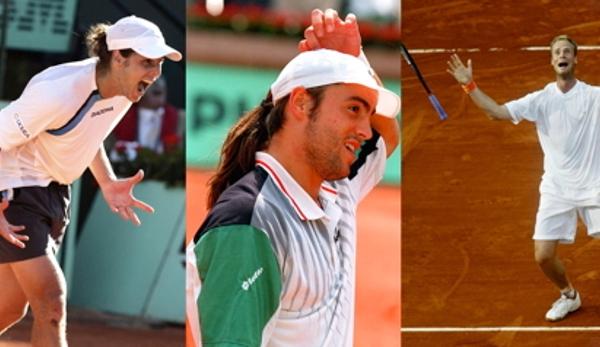


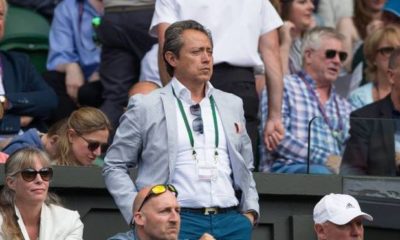

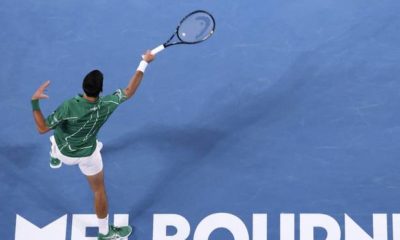
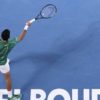
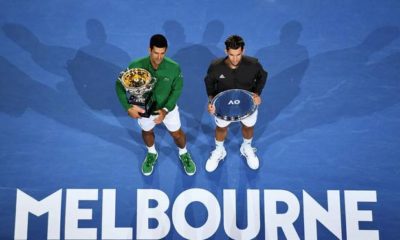
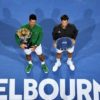
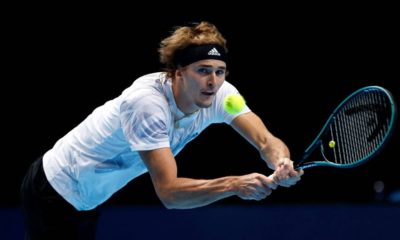
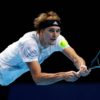
You must be logged in to post a comment Login